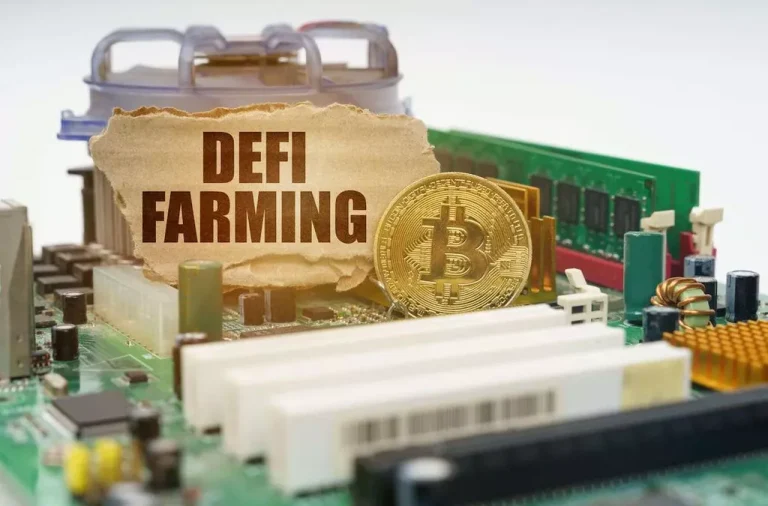Content
This method requires significantly less computing power as it does not rely on energy-intensive mining operations. Moreover, the duration and amount of staked coins influence which validator is selected, adding a further dimension of fairness and security. This approach maximises energy efficiency and significantly reduces the environmental impact compared to Proof of Work networks. However, nowadays, the term can be seen on a huge variety of cryptocurrency exchanges, wallets, and other services. You might even notice terms such as “liquidity bitcoin staking ledger pool” being mentioned, as well.
What Are the Risks of Staking Crypto?
By definition, staking is a crypto process that allows network participants to earn rewards by locking their coins in wallets. These coins are then used to validate network transactions or as a liquidity source. Staking is applied in networks based on the Proof of Stake (PoS) consensus algorithm. Here, consensus is achieved through validators (participants who stake their coins and verify and confirm transactions). Participants become validators by depositing a set minimum amount of the cryptocurrency used in the network into their wallets. Staking cryptocurrency is one of the most https://www.xcritical.com/ popular methods to earn a digital passive income.
Proof of Work vs Proof of Stake
To learn more about our rating and review methodology and editorial process, check out our guide on How Forbes Advisor Rates Investing Products. Our editors are committed to bringing you independent ratings and information. We use data-driven methodologies to evaluate financial products and companies, so all are measured equally. You can read Non-fungible token more about our editorial guidelines and the investing methodology for the ratings below.
How to Stake Crypto – Step-by-Step
Rasul advises that you carefully review the terms of the staking period to see how long it lasts and how long it would take to get your money back at the end when you decide to withdraw. Still, since you’re selling on a secondary market, you need to find a willing buyer or lender. Plus, there’s no guarantee you’ll be able to do so or get all your money back early. Those able and ready to stake a full node (32 ETH) can solo stake by running a validator themselves at home, or use self-custodial staking solutions like Consensys Staking.
- The price for earning staking rewards is bearing the cryptocurrency’s potential downside.
- In proof-of-work (PoW) networks, like Bitcoin, blocks (and the transactions within them) are validated by miners.
- Proof of stake is one of the most popular for its efficiency and because participants can earn rewards on the crypto they stake.
- For example, at the time of this writing, you can earn 4.55% APY on your Solana holdings.
- Investors who prefer this medium have to keep their PoS tokens staked in one address.
In exchange for their commitment, validators receive rewards denominated in the native cryptocurrency. The bigger their stake, the higher chance they have to propose a new block and collect the rewards. After all, the more skin in the game, the more likely you are to be an honest participant.
Ethereum’s rival, Bitcoin cannot be staked because its blockchain still runs on the proof-of-work consensus which takes into account only physical input from miners before transactions are validated. Alternatively, users can stake the wrapped (ERC20) version of Bitcoin on other pools accessible through DeFi protocols such as Aave, Compound. Currently, there are thousands of staking pools distributed across various platforms. DeFi enthusiasts look out for pools with either high annual percentage returns (APR) or annual percentage yields (APY). Additionally, they try to stake assets with good fundamentals and room to grow in market valuation.
There’s debate over which consensus mechanism is the more secure option. Although the computational power required by proof of work uses substantial energy, it also makes proof-of-work blockchains difficult to attack. Proof of stake in crypto is a consensus mechanism — a way for a blockchain to validate transactions.

Participants trying to earn a chance to validate new transactions offer to lock up sums of cryptocurrency in staking as a form of insurance. The latter is known as “slashing” and, while rare, has happened across a number of blockchains, including Polkadot and Ethereum. You can think of staking as the crypto equivalent of putting money in a high-yield savings account. When you deposit funds in a savings account, the bank takes that money and typically lends it out to others. In return for locking up that money with the bank, you receive a portion of the interest earned from lending – albeit a very very low portion.

While the benefits outweigh risks, investors still have to exercise due diligence if attempting to stake coins on small exchanges and lesser-known platforms. With an average yield rate of 7.4%, users are sure to enjoy lots of rewards. Users can stake their tokens for as long as they prefer while they partake in the transaction validation process and earn valuable rewards for doing so.
Earn Rewards- Once you’ve staked your assets, you will begin receiving daily rewards. Although crypto that you stake is still yours, you need to unstake it before you can trade it again. It’s important to find out if there’s a minimum lockup period and how long the unstaking process takes so you don’t get any unwelcome surprises. For example, many smaller crypto projects offer high rates to entice investors, but their prices then end up crashing. If you’re interested in adding crypto to your portfolio but you’d prefer less risk, you may want to opt for cryptocurrency stocks instead.
Cardano has the highest staking rate among other cryptocurrencies with staking functionality, with 71.7% of the tokens locked in various staking pools. Staking is the central premise of the fledgling proof of stake (PoS) technology, which many blockchains are now adopting. “In PoS, validators stake their assets as a skin-in-the-game, which gets slashed or destroyed if they behave maliciously,” says Gritt Trakulhoon, lead crypto analyst for Titan, an investment platform. For example, trying to create a fraudulent block of transactions that didn’t happen. Staking helps ensure that only legitimate data and transactions are added to a blockchain.
Rewards are automatically paid out to users monthly, with the platform reserving a small percentage of yields as the fee for operational costs and other incurred costs. Users should note that staking is not available in all countries via an exchange. Hardware wallets are recognized for their security since they are not connected to the internet. Still, to access them, you would need a private key known to only the owners of such wallets. While they run the nodes and handle other technicalities involved, they charge commissions on your rewards. For example, you could have a pool with Binance Coin (BNB) and Axie Infinity Shards (AXS) paired together.
When you stake crypto and you’re chosen to validate transactions, you receive those crypto rewards. Staking is a fascinating concept in the world of cryptocurrencies that supports the functioning of blockchain networks and offers investors a way to earn returns through their digital assets. Under this system, network participants who want to support the blockchain by validating new transactions and adding new blocks must “stake” set sums of cryptocurrency. However, the exact mechanisms and rules will vary from one staking platform to another. In some cases, withdrawing staked assets early may lead to partial or total loss of the staking rewards.
If you are chosen to be a validator and lose connectivity halfway through, a network may penalize you by keeping a portion of your staked coins. If all of these conditions are met, a transaction will get added to the blockchain, and the validator will be paid for its work in crypto rewards. Specifically, while you stake your crypto coins on exchange pools, you are able to earn a passive interest. It’s like trusting your money with a friend, for a specified amount of time, and then getting back more than you’ve given.

